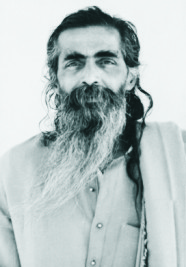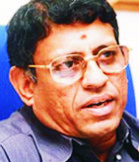
 The endorsement of Guruji’s views on ‘Hinduism’ and ‘Hindutva’ by the Fundamentalism Project and Hindutva case are just two illustrations that whet appetite of the readers for the highly interesting and informative fare that this series unfolds on how history has repeatedly validated Guruji. The two examples establish how Guruji’s thoughts dismissed by the establishment in his times became accepted later by the course and force of history. Fundamentalism Project and Hindutva judgements are not literary works. They are the outcome of historical developments after Guruji. Here is the background of how these two historical developments had occurred, which will show that Guruji’s thoughts were validated by what history unfolded after him.
The endorsement of Guruji’s views on ‘Hinduism’ and ‘Hindutva’ by the Fundamentalism Project and Hindutva case are just two illustrations that whet appetite of the readers for the highly interesting and informative fare that this series unfolds on how history has repeatedly validated Guruji. The two examples establish how Guruji’s thoughts dismissed by the establishment in his times became accepted later by the course and force of history. Fundamentalism Project and Hindutva judgements are not literary works. They are the outcome of historical developments after Guruji. Here is the background of how these two historical developments had occurred, which will show that Guruji’s thoughts were validated by what history unfolded after him.
Historic drive behind Fundamentalism project
Even though “fundamentalism” – where religion overrides science – has been in public discourse for decades, it was only in 1987 that a study on fundamentalism by global scholars was instituted by the American Academy of Social Sciences. The fundamentalism project was the response of the Western – read Christian – scholarship to the movement of history and the outcome of the West-driven global historical process. This study was no accident. It was compulsion of history. The rise of militant Islam and a resurgent church, both contrived by the West to counter communism, had weakened the “secularisation theory” that evolved in the West in 1950s and 1960s. The theory had prophesied that the more westernised a traditional society became, the less religious it would become, and modernity would have the last laugh and tradition, its last breath. The modernisation process opened before the US the possibility of drawing the Middle East Islamic nations into its orbit and away from the Soviet’s.
But the secularisation theory received a huge setback in 1979, six years after Guruji had passed away. Three historic developments took place in the same year – the Iranian Revolution, the Soviet Invasion of Afghanistan and a Cardinal from Communist Poland becoming the Pope, John Paul II. The Soviet occupation of Afghanistan forced the US to legitimise, promote and weaponise Jihadi forces, the likes of Taliban. The Iranian Revolution triggered robust bottom-upward Islamisation campaign all over world. Pope John Paul II criss-crossed the world tirelessly, drew large crowds of young people everywhere, particularly Europe. In this historic process, the Pope dynamited the communist rule in Poland which eventually brought down communism; the Islamisation tsunami initiated by Iranian Revolution swept across the Muslims world; the Jihadis’ victory over the Soviets in Afghanistan legitimised the concept and forces of Jihad; and political Islam began rising with the support of the West. These historic developments forced the West study the meaning of, and respond to, these historic developments which challenged the secularisation theory.
The core thesis of the study was that reaction among adherents of different religions to globalisation of Western modernity constituted “fundamentalism”, thus substituting ‘modernity’ for ‘science’ as conflicting with religion. It was while analysing Hinduism and the ideology of RSS as part of their work, that the project scholars concurred with the views of Guruji, but in their own words thus: terms like “militant Hinduism”, “Hindu fundamentalism”, “religious revivalism”, or “reactionary Hinduism” used to describe the ideology of the (RSS) movement ‘seem inappropriate’ for ‘Hindu religious phenomena.’ And being ‘without foundation texts, defined dogmas, and institutional structures’ like in most varieties of fundamentalism in other belief systems, according to modern Hindu scholars, the Hindu view of life is grounded in ‘spiritual experience that is essentially rational and humanistic.’
Undeniably, it was the historic developments studied by the fundamentalism project, not anyone’s opinion, that validated Guruji’s view that Hinduism was different from other religions. But, decades ahead of the fundamentalism study, Guruji had distinguished Hinduism from the dogmatic faiths. The fundamentalism project, after studying the features of the monotheistic faiths and their conflict within and with secularism, had to distinguish Hinduism from them, which Guruji had done decades earlier. More on Fundamentalism Project, Guruji and RSS later.
Historic background to the Hindutva case
The Hindutva case was not a bipartite litigation between two parties as litigations normally are. It represented an ideological clash between two conflicting thoughts. One was the establishment view articulated by Pandit Nehru, which regarded Hinduism as just a religion like the monotheistic faiths which clashed with one another and also with secular rule. The other was the RSS view articulated by Guruji that the inclusive Hinduism was never, and would never be, in conflict with any religion or with secularism as it was superior to secularism, since it accepted all faiths and not negated any. But, how did this case of clashing ideologies land in the Supreme Court?
The Hindutva case was the product of Ayodhya movement, which had originally targeted to build a temple for Sri Ram at his Janmasthan on which a mosque that was dysfunctional for decades stood. But gradually, the Ayodhya movement evolved as the response of the people and the forces of history to minority appeasement and other pseudo-secular distortions in Indian polity. The hitherto unchallenged idea of minorityism as equal to secularism was challenged by the movement. Hindutva or Hindu cultural nationalism emerged as the antidote for pseudo-secularism. The Bharatiya Janata Party and Shiv Sena, which had adopted Hindutva as their ideology were targeted as fundamentalist, communal and unsecular. Therefore, the election of some of their candidates was challenged on the ground that the concept of Hindutva was anti-secular and therefore constituted communal appeal for votes.
The establishment view had contended that Hindutva was just a religion and communal idea and that was countered by the other view, articulated for decades and decades ago by Guruji, that Hindutva was an all inclusive concept and way of life of Indians, not a narrow religion, nor opposed to other religions, or to secularism. The Supreme Court accepted the latter view, that of Guruji, by an appraisal of the concepts of Hinduism and Hindutva. So it is again the course and force of history, which have established the truth of views of Guruji on Hindu cultural nationalism represented by Hindutva.
Series unfolds the historic forces that validated Guruji’s thoughts
Beginning with the two illustrations of Fundamentalism project and the Hindutva ruling, the series discovers several such illustrations and unfolds how Guruji’s views on different subjects have been vindicated by historic forces and how Guruji was ahead of time. Based on research and analysis, the series presents how Guruji’s thoughts were validated by time and brings out:
p How historical accounts always proved, and as the Supreme Court of India later affirmed, Guruji’s view that minorities of India were always part of the mother Hindu society and culture;
p How Guruji’s perception that all people of Bharatavarsha and Bharatakhanda have common culture and traditions have been accepted and endorsed even by Pakistan government later;
p How precisely as Guruji had warned against disregarding and weakening the core culture in the name of composite culture or multiculturalism there is growing realisation in the West that shift to multiculturalism has weakened the core societies and core cultures in US-West;
p How Guruji’s views on cultural nationalism objected to by Westernised thinkers as illiberal in his times are re-appearing in the West as the corrective to multiculturalism;
p How Guruji’s enunciation of the concept of assimilation of minorities into the mainstream or core society is now viewed by Western thinkers positively as being inevitable to avoid societal and national disintegration and violence;
p How, as Guruji had warned against, the ambivalence in cultural nationalism confuses the West promotes multiculturalism which is destabilising societies;
p How Samuel Huntington’s “No” to multiculturalism echoes that what Guruji had said decades earlier;
p How Guruji’s insistence on cultural nationalism as the bulwark against cultural decline and national chaos, is now proved by Western experience;
p How Guruji’s warning that minority appeasement would promote minority separatism has now become a national and also global concern;
p How Guruji’s emphasis on the inevitability of culture and civilisation as essential identities for a people and nation is being validated by the emerging perception that unless such diverse identities are recognised, the world would slip into violence and disorder;
p How Guruji battled to save the nation, Hindu society and minorities by his formulation of majority-minority relations that transcended the contextual compulsions;
p How contrary to the popular notion, Guruji and Pandit Nehru had actually broadly agreed on cultural unity and minority assimilation, but differed only on applying the terminology ‘Hindu’ nation;
p How contrary to the popular view, there was complete convergence of views between Guruji and Gandhiji on cultural and civilisational unity and continuity of India and on assimilation of minorities;
p How Guruji’s untiring efforts to establish that “Dharma” was different from “religion” is now being accepted in public discourse;
p How Guruji views on “Dharma” as a trans-religious concept expressed decades years ago have been gradually accepted by the judiciary and in politics;
p How Guruji’s appeal to align the Anglo-Saxon structure of the Indian Constitution insensitive to the age-old culture of India with inclusive Hindu view of life is now becoming broadly accepted in judicial and public discourse;
p How Guruji adumbration of “the other mind of contemporary Indian leadership” is now the mainstream view according to the Fundamentalism Project;
p How Guruji has been proved right on the character of Islamists and of Pakistan as a state and on the situation prevailing in Pakistan;
p How Guruji was on the dot on the nature and emergence of China which was to happen a decade after his lifetime;
p How Guruji’s dissent against the establishment thinking of his time was an appeal to the brooding conscience of India and its validity is being recognised after him; and
p How, therefore, Guruji was a drishta, who saw and spoke ahead of his times and was validated by history after him.
Yet, Guruji, whose views were validated after his lifetime, was criticised in his times, maliciously, as anti-secular and communal! And now in the weeks ahead follows detailed expositions on how the course of history, not just in India but all over the world, has validated Guruji’s thoughts
(The writer can be contacted at [email protected])














Comments